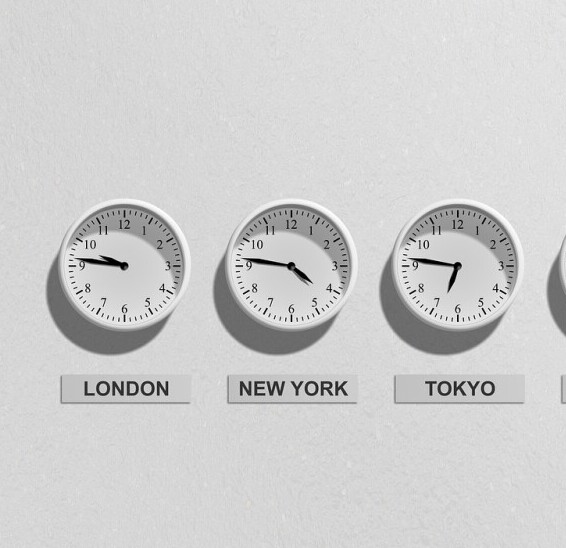 Balancing work and personal life is like walking a tightrope. Both sides demand your time and energy, but leaning too far one way can send you tumbling. The trick is finding that sweet spot where both coexist harmoniously.
Balancing work and personal life is like walking a tightrope. Both sides demand your time and energy, but leaning too far one way can send you tumbling. The trick is finding that sweet spot where both coexist harmoniously.
People struggle with different aspects of this balance. Stress from work doesn’t clock out when you do; it sneaks into your evenings and weekends. That’s why understanding the true benefits of achieving balance is so crucial. A balanced life isn’t just about feeling good—though that’s a huge part of it. It’s also about improved productivity, better health, and more quality time for the things that make life special.
Common challenges include overworking, failing to set boundaries, and neglecting self-care. Many may feel pressure to be constantly available for work or to ‘hustle harder,’ leading to burnout and a strained personal life. But these issues aren’t insurmountable. Small changes can make a big difference.
 Why strive for balance? First off, it keeps you sane. Juggling too much leads to stress and anxiety. A balanced life fosters harmony. You’re more present during family dinners, more productive at work, and more relaxed overall. Plus, who doesn’t want to feel less stressed? Understanding these benefits motivates you to put in the effort to find balance.
Why strive for balance? First off, it keeps you sane. Juggling too much leads to stress and anxiety. A balanced life fosters harmony. You’re more present during family dinners, more productive at work, and more relaxed overall. Plus, who doesn’t want to feel less stressed? Understanding these benefits motivates you to put in the effort to find balance.
We’ll cover practical strategies to help you achieve this balance. Whether it’s mastering time management techniques or setting up a support network, there are ways to make it work. Remember, it’s all about finding what suits your unique lifestyle.
Effective Time Management Techniques
 Time management is the cornerstone of a balanced life. Without it, even the best intentions can fall apart. Imagine trying to complete a puzzle without the picture on the box – that’s what life feels like without effective time management. So, let’s lay down some solid techniques to help you stay on top of things.
Time management is the cornerstone of a balanced life. Without it, even the best intentions can fall apart. Imagine trying to complete a puzzle without the picture on the box – that’s what life feels like without effective time management. So, let’s lay down some solid techniques to help you stay on top of things.
First up, prioritizing tasks. The Eisenhower Matrix is a game-changer for this. Split tasks into four categories: urgent and important, important but not urgent, urgent but not important, and neither. This helps you focus on what truly matters while delegating or postponing the rest. Those emails screaming for immediate attention? They might not be as critical as you think.
Time blocking is another powerhouse technique. Allocate specific time slots for different activities. Think of your day as a series of scheduled meetings with yourself. This way, you’re not just winging it – you have a clear plan. Whether it’s 9-11 AM for deep work or 3-4 PM for replying to emails, time blocking keeps you organized and less stressed.
Productivity apps and tools are like personal assistants in your pocket. Apps like Todoist, Trello, and Google Calendar can help you keep tabs on tasks, deadlines, and appointments. They sync across devices, ensuring you have your to-do list handy at all times. You don’t have to remember everything; let tech do the heavy lifting.
Taking control of your time requires a bit of setup but pays off in spades. Once you establish these habits, you’ll notice a significant drop in stress levels and an uptick in productivity. Time management isn’t just about getting things done – it’s about making time for what makes you happy.
Setting Boundaries and Managing Expectations
Setting boundaries can feel tough, but it’s crucial for keeping work and personal life separate. Clear boundaries protect your time and energy, ensuring you don’t burn out. A great place to start is defining your work hours. Be strict about when you start and end your workday. This helps to stop work from creeping into your personal time.
Communicating these boundaries is essential. Let your employer and colleagues know when you’re available and, more importantly, when you’re not. Use tools like email autoresponders and calendar blocks to reinforce your availability. At home, family members need to understand your work schedule to avoid unnecessary interruptions.
 Learning to say ‘no’ is a skill worth mastering. Overcommitting leads to stress and reduced productivity. Politely decline extra tasks when you’re at capacity. This isn’t about being unhelpful; it’s about prioritizing your workload and keeping quality high. A helpful phrase can be, ‘I’m currently at full capacity with my projects, can we revisit this later?’
Learning to say ‘no’ is a skill worth mastering. Overcommitting leads to stress and reduced productivity. Politely decline extra tasks when you’re at capacity. This isn’t about being unhelpful; it’s about prioritizing your workload and keeping quality high. A helpful phrase can be, ‘I’m currently at full capacity with my projects, can we revisit this later?’
Boundaries aren’t just about time. They also mean creating mental space. When you clock out, actually log off and leave work behind. Avoid checking emails or taking work calls outside of your set hours. This mental separation allows you to fully engage with personal activities, bringing more joy and relaxation to your personal life.
Sometimes, external pressures can test your boundaries. Be prepared for this and have a strategy in place to handle it. Whether it’s an unexpected work crisis or a spontaneous social invitation, knowing how you’ll respond keeps you in control. Stick to your boundaries firmly but kindly. Consistency reinforces the importance of those limits to others.
Self-Care and Mental Well-being
 Self-care isn’t just a buzzword; it’s a lifeline. Taking regular breaks throughout your day can recharge your brain and body. Simple practices like a short walk, a quick stretch, or even just a moment of deep breathing can make a world of difference.
Self-care isn’t just a buzzword; it’s a lifeline. Taking regular breaks throughout your day can recharge your brain and body. Simple practices like a short walk, a quick stretch, or even just a moment of deep breathing can make a world of difference.
Incorporating mindfulness and relaxation techniques can help keep stress at bay. Apps like Headspace or Calm offer guided meditations that fit into even the busiest schedules. Just five minutes can reset your mind and improve focus.
Physical activity is a big part of self-care. Exercise isn’t only good for your body; it’s a stress-buster for your mind too. Whether it’s a jog, a yoga session, or hitting the gym, find something you enjoy and make it a regular part of your routine.
Recognizing signs of burnout is crucial. Feeling constantly tired, irritable, or overwhelmed? These are red flags. Listen to your body and mind. If things are feeling off, take immediate action—perhaps a day off, a chat with a trusted friend, or consulting a mental health professional.
Dedicated ‘me-time’ is another essential. Engage in activities that make you happy: reading a book, cooking a nice meal, or indulging in a hobby. These moments help you disconnect from stress and connect with what you love.
Building a Supportive Environment
A supportive environment can make balancing work and personal life much easier. Surround yourself with people who understand your goals and respect your boundaries. This network can include family, friends, or colleagues who can offer advice, lend a hand, or simply listen.
Involving your family in your time management plans can also be beneficial. Share your schedule with them, and discuss ways they can help. Maybe it’s taking turns cooking dinner or setting aside quiet times for everyone to unwind. When everyone is on the same page, it minimizes misunderstandings and keeps the household running smoothly.
Don’t hesitate to reach out for professional help if needed. Consulting a therapist or life coach can offer you strategies tailored to your specific situation. Professional advice can provide fresh perspectives and new approaches to managing your time and stress.
Networking with like-minded individuals can be helpful too. Join groups or communities that focus on work-life balance. Sharing experiences and tips with others who understand your struggles can be both supportive and motivating. It’s encouraging to know you’re not alone in this journey.
Lastly, a supportive work environment is crucial. Communicate openly with your employer about your needs. Many companies offer flexible work arrangements, wellness programs, or resources designed to help employees find balance. Tap into these resources whenever possible.
